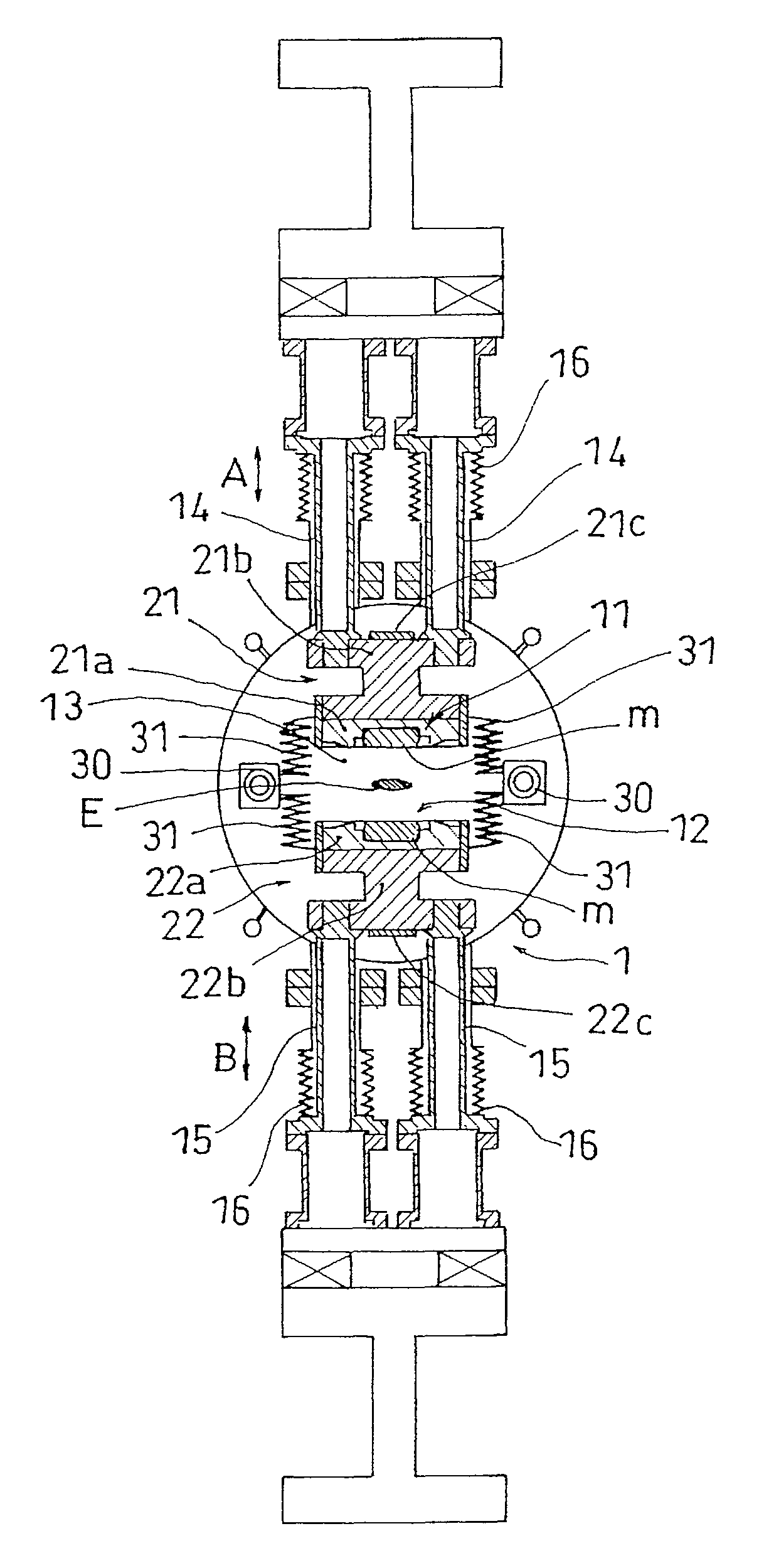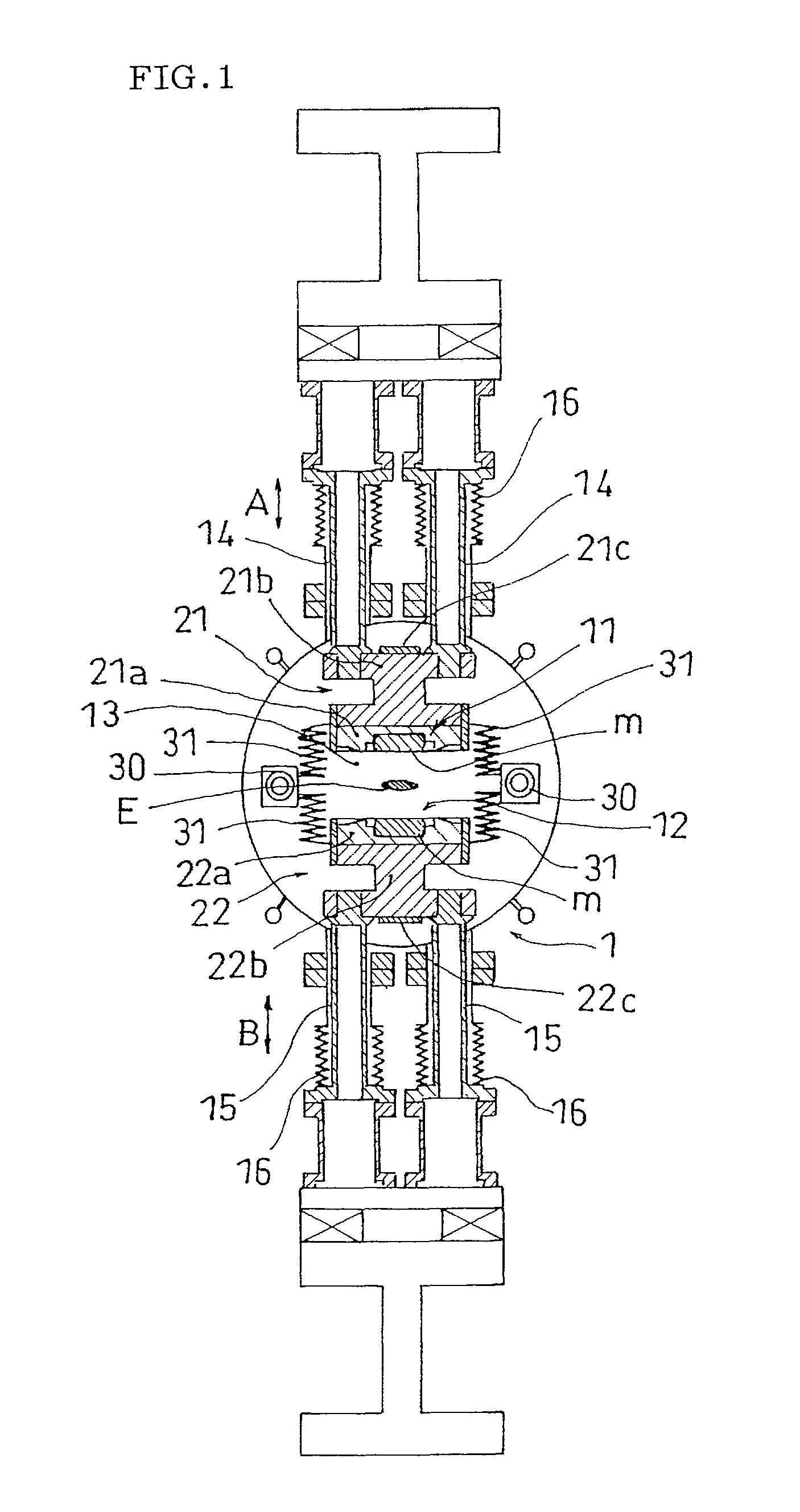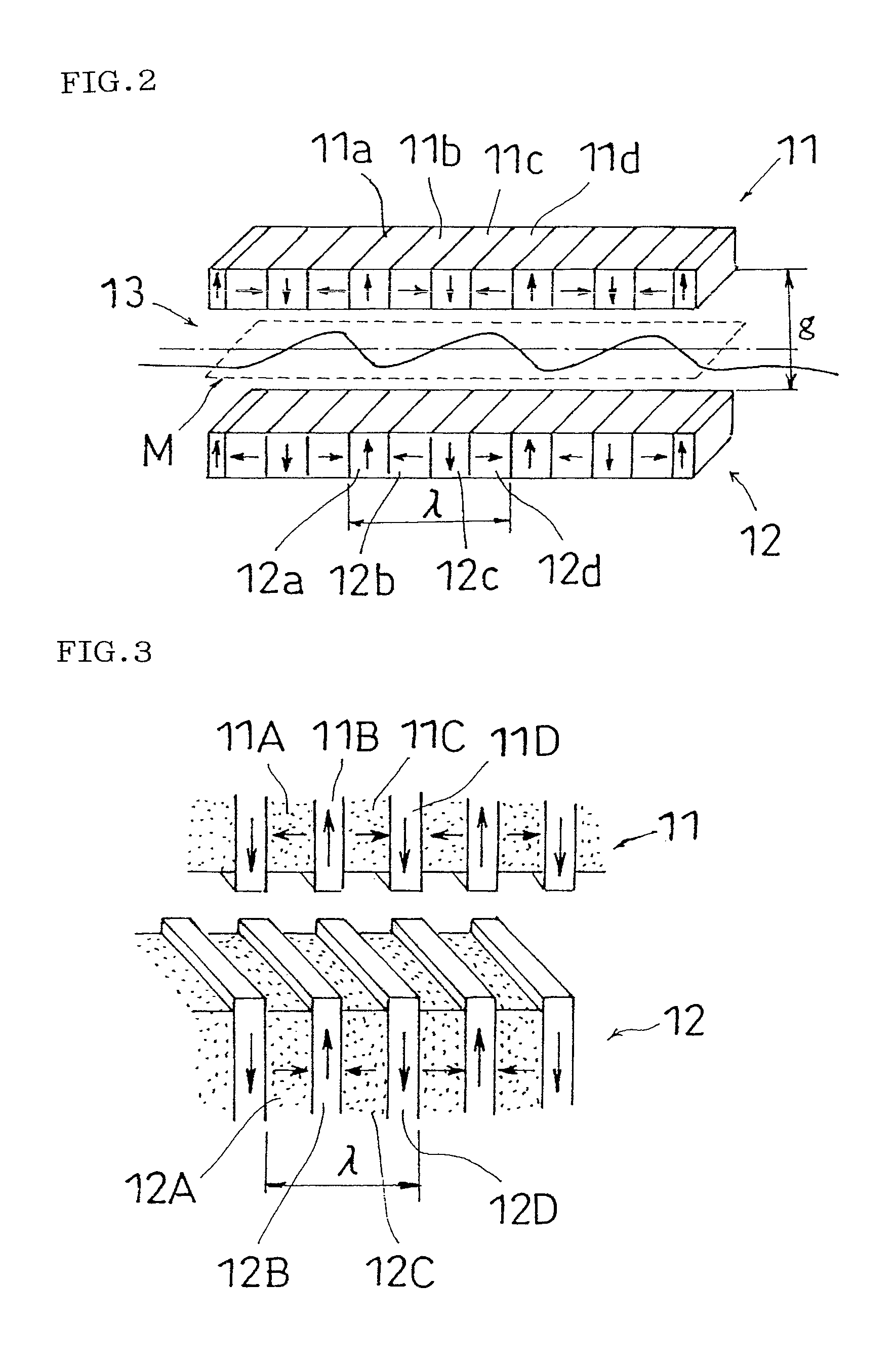Undulator
a technology of undulator and magnet, which is applied in the field ofundulator, can solve the problems of demagnetization of permanent magnets and limit the characteristics of permanent magnets, and achieve the effect of improving radiation-proof characteristics and intensifying the magnetic field in spa
- Summary
- Abstract
- Description
- Claims
- Application Information
AI Technical Summary
Benefits of technology
Problems solved by technology
Method used
Image
Examples
first embodiment
[0063]Next, a description will be made of a construction of the undulator according to a first embodiment. FIG. 1 is the transverse sectional view showing the undulator cut along a surface perpendicular to the traveling direction of the electron beam. The first magnetic circuit 11 and the second magnetic circuit 12 are oppositely arranged with the space 13 therebetween. As described above with reference to FIG. 2, according to the first magnetic circuit 11, many permanent magnets “m” are arranged along the traveling direction of the electron beam (direction perpendicular to a sheet surface of FIG. 1). Similarly, many permanent magnets “m” are arranged in the second magnetic circuit 12. A concrete example of a preferred permanent magnet “m” will be described below.
[0064]A first support body 21 is provided to mount and support the first magnetic circuit 11. The first support body 21 includes a first magnet holder 21a (corresponding to a holder) and a first magnet mounting beam 21b (co...
second embodiment
[0079]Hereinafter, a description will be made of an undulator according to a second embodiment with reference to FIG. 6. The same reference numbers are allotted to the components having the same functions as those in the first embodiment and their descriptions will not be repeated.
[0080]According to the second embodiment, a pair of first refrigerant passing tubes 30A and a pair of second refrigerant passing tubes 30B are provided and each first refrigerant passing tube 30A is connected to a first support body 21 through a connecting component 31A. Similarly, each second refrigerant passing tube 30B is connected to a second support body 22 through a connecting component 31B. Each of the connecting components 31A and 31B has flexibility. Thus, although each of the refrigerant passing tubes 30A and 30B is fixed to a vacuum chamber 1, even when the first and second support bodies 21 and 22 are vertically moved, connecting states between the support bodies 21 and 22 and the refrigerant p...
third embodiment
[0081]Hereinafter, a description will be made of an undulator according to a third embodiment with reference to FIG. 7. This embodiment is different from the second embodiment in that first and second refrigerant passing tubes 30A and 30B are fixed to first and second support bodies 21 and 22 through fixing units 32A and 32B. The fixing units 32A and 32B are formed of metal plate (such as a copper plate (beryllium copper and equivalent), a stainless plate or an aluminum plate). When the first support body 21 and the second support body 22 are vertically moved, the first refrigerant passing tube 30A and the second refrigerant passing tube 30B are also vertically moved, respectively. Therefore, a connecting component having flexibility is not used. In addition, when it is necessary for the fixing units 32A and 32B to have thermal resistance, it is preferable that those are formed of the stainless plate.
PUM
| Property | Measurement | Unit |
|---|---|---|
| temperature | aaaaa | aaaaa |
| magnetic field | aaaaa | aaaaa |
| temperature | aaaaa | aaaaa |
Abstract
Description
Claims
Application Information
 Login to View More
Login to View More - R&D
- Intellectual Property
- Life Sciences
- Materials
- Tech Scout
- Unparalleled Data Quality
- Higher Quality Content
- 60% Fewer Hallucinations
Browse by: Latest US Patents, China's latest patents, Technical Efficacy Thesaurus, Application Domain, Technology Topic, Popular Technical Reports.
© 2025 PatSnap. All rights reserved.Legal|Privacy policy|Modern Slavery Act Transparency Statement|Sitemap|About US| Contact US: help@patsnap.com



